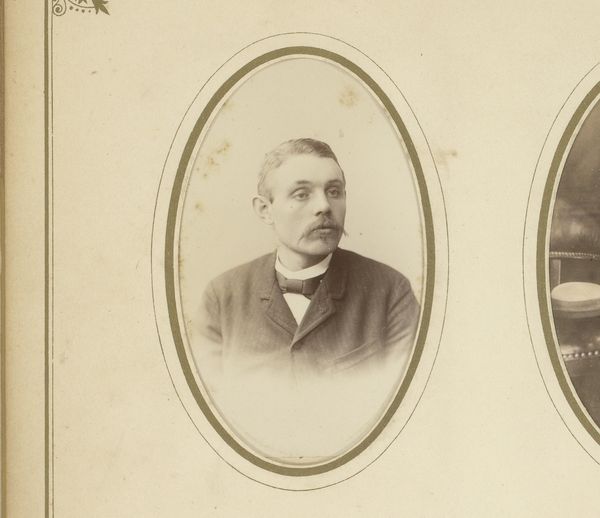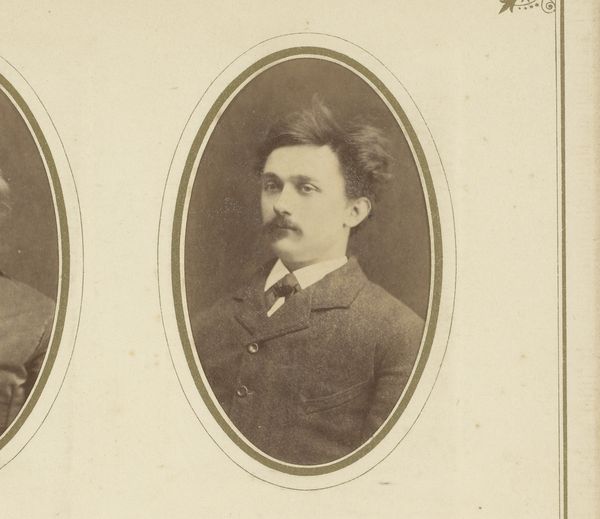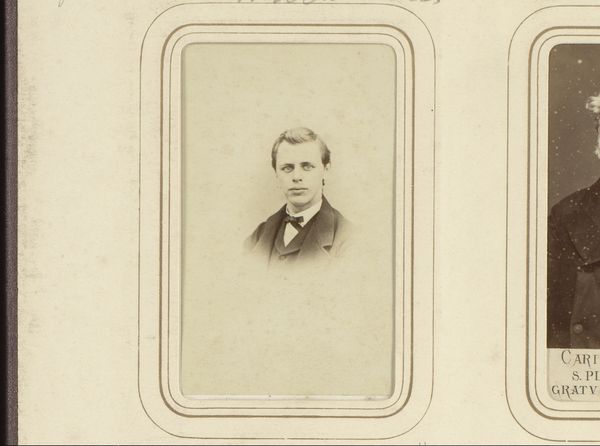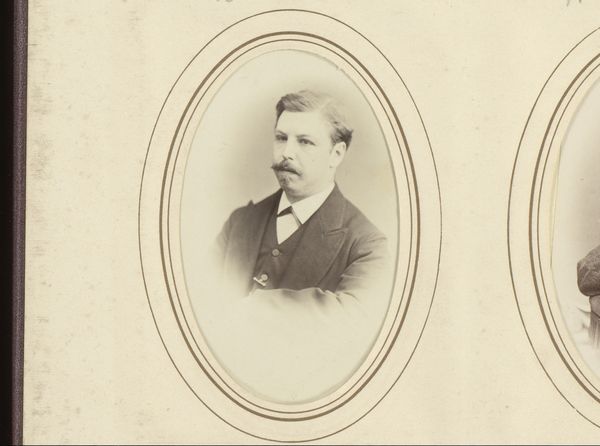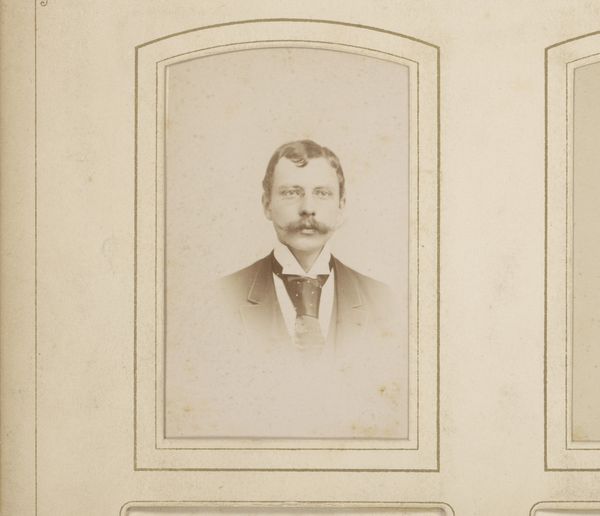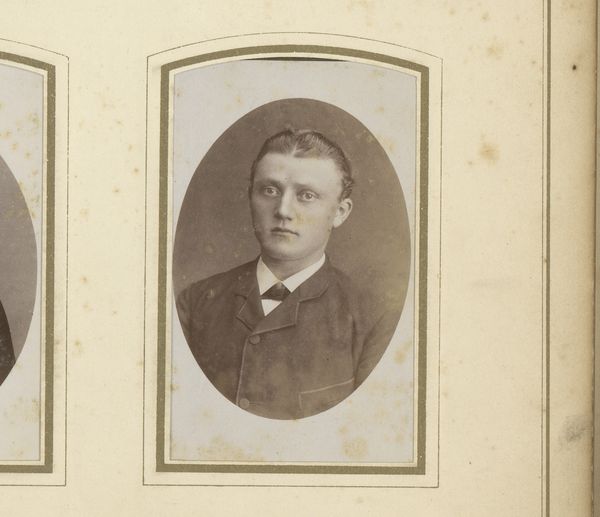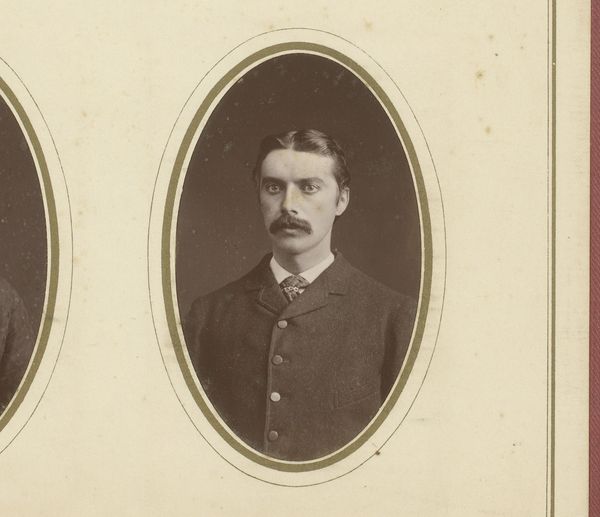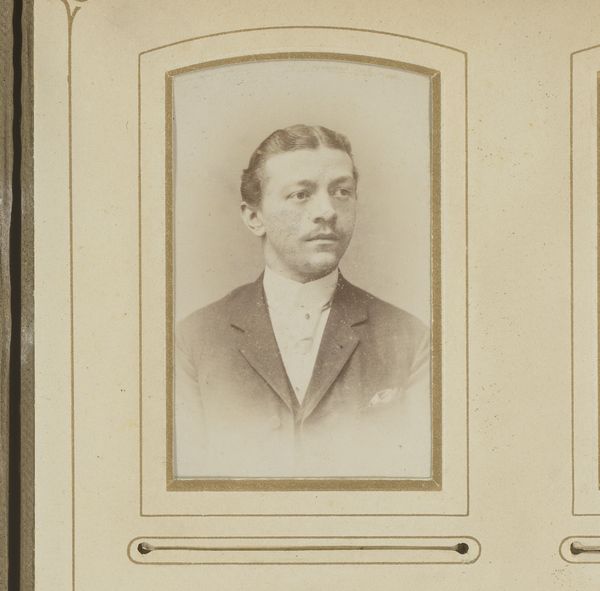
photography, gelatin-silver-print
#
portrait
#
photography
#
gelatin-silver-print
Dimensions: height 84 mm, width 51 mm
Copyright: Rijks Museum: Open Domain
Editor: Here we have a gelatin silver print dating from the 1880s-1890s, "Portret van een man met snor," or "Portrait of a Man with a Mustache" by Willem Gerhardus Kuijer. The detail achieved in such a small format is striking. What strikes you most about this piece? Curator: I see a confluence of class and emerging technology. Consider the gelatin silver print itself. It represents a shift toward mass production in photography, making portraiture more accessible than painted portraits for the growing middle class. Editor: Interesting. I hadn't thought about the democratization of the portrait. Curator: Exactly! But note the man’s attire: his double-breasted jacket and carefully groomed mustache denote a certain status. This wasn’t just anyone getting their picture taken; it suggests aspirations of upward mobility made newly possible through industrial and chemical processes. The mass production of suits and photography materials went hand-in-hand. Does that connection resonate? Editor: Absolutely! It paints a clear picture of the social landscape at the time. It makes me wonder about who had access to these technologies and who was excluded. Curator: A key point. While cheaper than painting, early photography still had associated costs. Thinking about who is *not* in these portraits is equally crucial. These visual materials circulated widely and acted as material symbols in defining social roles. Editor: This has definitely shifted my perspective. I was focused on the individual, but I see now how the image represents much broader economic and social forces at play. Curator: Precisely! Examining the materials and modes of production transforms how we view even the simplest portrait.
Comments
No comments
Be the first to comment and join the conversation on the ultimate creative platform.

